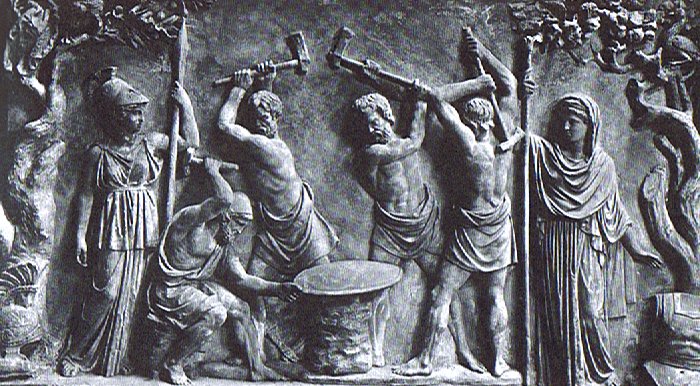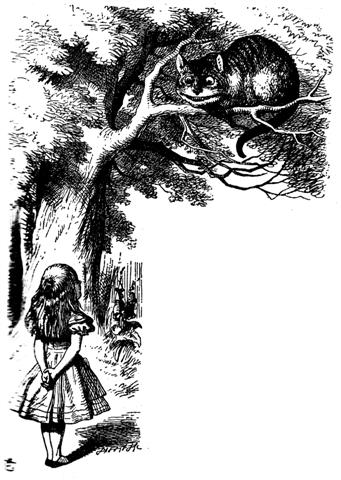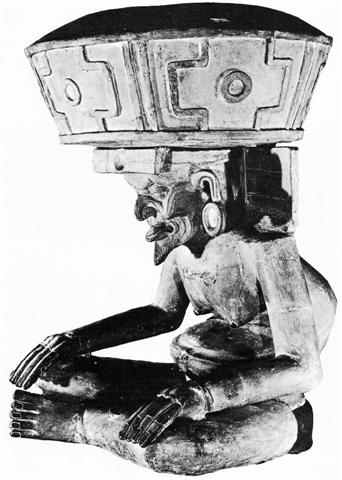Bb4.7
The crucial glyph located 107 (= 78 + 29) days from the beginning of side b
consists of a kind of 'leg' at left and what could be intended
to represent 'claws' ('grasping hands',
Κ) ahead:
|
Egyptian
hand |
 |
Phoenician kaph |
 |
Greek
kappa |
Κ (κ) |
|
Kaph is thought to
have been derived from a pictogram of a hand
(in both modern Arabic and modern Hebrew,
kaph means palm/grip) ...
... The
manik, with the tzab, or
serpent's rattles as prefix, runs across
Madrid tz. 22 , the figures in the pictures
all holding the rattle; it runs across the
hunting scenes of Madrid tz. 61, 62, and
finally appears in all four clauses of tz.
175, the so-called 'baptism' tzolkin. It
seems impossible, with all this, to avoid
assigning the value of grasping or
receiving. But in the final confirmation, we
have the direct evidence of the signs for
East and West. For the East we have the
glyph Ahau-Kin, the Lord Sun, the
Lord of Day; for the West we have
Manik-Kin, exactly corresponding to the
term Chikin, the biting or eating of
the Sun, seizing it in the mouth.



The pictures (from Gates)
show east, north, west, and south;
respectively (the lower two glyphs) 'Lord'
(Ahau) and 'grasp' (Manik).
Manik was the 7th day sign of the 20 and
Ahau the last ... |
 |
 |
 |
 |
 |
 |
 |
|
Bb3-26 → 192 |
Bb3-27 (526) |
Bb3-28 |
(472 - 365 = 107) |
Bb3-30 (108) |
Bb3-31 |
(18
* 29½) |
|
ko te marama kua haga
i tona mea ke |
ma te hakaua |
koia kua haga i to kava |
kua haati ia e kava |
ko te kava o Motoipua |
ko te marama kua haga
i tona mea ke |
o te kava kua haati |
|
Ua,
1. Cause, reason why something happens or is
done; he ûa te ua, au i-ta'e-iri-ai ki tooku hare,
because of the rain, I did not go home; ua kore,
without cause, without reason. 2.
Ceremononial stave
with a human face carved at one extremity. Vanaga. Cfr
toko. 1. A long club T. 2. Mgv.: ua, the
genitalia. Ta.: hua, id. Mq.: hua, id.
Ha.: hua, testicles. 3. Ta.: ua, the back
of the neck. Ma.: ua, id. Sa.: ua, the
neck. 4. Ta.: ua, a land crab which shears iron.
Ma.: uka, lobster. Sa.: uga, the hermit
crab. Churchill. Ûa.
Rain; 1. ûa hakamito, persistent, but
not strong, rain; 2. ûa kura, fine rain, drizzle;
3. ûa matavaravara, strong rain; 4. ûa parera,
torrential rain; 5. ûa tai, rain followed by
fair weather at sea. Ehu ûa, drizzle. Vanaga.
Ûaûa.
Tendons, muscles. 1. Hau ûaûa kio'e, line made
from rats' tendons. 2. Ûaûa toto, vein, artery.
3. Ûaûa piki, spasm. Vanaga. 1. Rain; hoa mai
te ua, to rain; mou te ua, to cease raining.
P Mgv., Mq., Ta.: ua, rain. 2. Vein, artery,
tendon (huahua
1) (uha G);
ua nene,
pulse; ua nohototo,
artery, ua gaei,
pulse. Uaua,
vein, tendon, line; kiko
uaua, muscle T.
Hakauaua, to mark with lines. P Pau.:
tare-ua,
tendon. Mgv., Mq., Ta.:
uaua, vein, tendon. Churchill.
U'a. Of the
tide, to reach its maximum; tai u'a, high tide.
Vanaga. Wave, surge; tai ua, high tide.
Churchill. Uá. Ata uá,
morning twilight.
Uáuá, to reside;
resident; noho uáuá to settle somewhere; ina
koe ekó noho uáuá, do not establish yourself there.
Vanaga.
Kava. 1. Sour; salty: vai kava,
saltwater, sea; te kava o te haíga, acrid
underarm smell; tagata kava - tagata kakara i te
kava, man with smelly armpits. 2. He-kava te haha,
to be thirsty. 3. To turn sour, to become embittered,
bad-tempered, exasperated (used with manava):
tagata manava kava, bad-tempered, angry man. Vanaga.
Bitter, salt; vai kava, brackish water;
hakakava, to embalm; kavakava, acid, sharp,
bitter, salt, spiritous, vinegar, poisonous,
disagreeable; akavakava, to make sharp;
hakakavakava, to make acid. P Pau.: kava,
disagreeable to the taste; kavakava, acid, sharp.
Mgv.: kava, to be bitter, sour, acid, salt. Mq.:
kava, bitter. Ta.: ava, bitter, acid,
salt. Kavahia: 1. Comfort, comfortable, to feast;
hakakavahia, comfort, comfortable. 2. Repulsive
(of food), disgusted; hakakavahia, repulsion.
Kavakava, rib; moi kavakava, a house god G. P
Mgv.: vakavaka, the breast. Mq.: vakavaka,
vaávaá, rib. Ma.: wakawaka, parallel
ridges. We shall need all the available material in
order to determine the germ sense of this word. Sa.:
va'ava'a, the breast-bone of a bird; fa'ava'a,
the frame as of a slate. To.: vakavaka, the side.
Fu.: vakavaka, the side below the armpit. Ha.:
hoowaa, to make furrows. In all these we may see the
idea of ridge or depression, or of both, as primal
(Rapanui, Samoa, Marquesas, Maori, Hawaii), and as
secondary the part of the body where such appearances is
common (Mangareva, Tonga, Futuna). Churchill. Mgv.:
kava, the pepper plant and the drink made therefrom.
Ta.: ava, id. Mq.: kava, id. Sa.: 'ava,
id. Ma.: kawa, a pepper. Kavakava, a fish.
Sa.: 'ava'ava, id. Kavapui, a tree. Ta.:
avapuhi, a fragrant plant. Mq.: kavapui,
wild ginger. Sa.: 'avapui, id. Ha.: awapuhi,
id. Churchill. Mq.: ava, a small fish of sweet
water. Sa.. 'ava'ava, a small fish. Ha.: awa,
a fish. Kakava, burnt. Sa.: 'a'ava, very
hot. Churchill.

Hati 1.
To break (v.t., v.i.); figuratively: he hati te pou
oka, to die, of a hopu manu in the exercise
of his office (en route from Motu Nui to
Orongo). 2. Closing word of certain songs. Vanaga.
Hahati. 1. To break (see hati). 2. Roughly
treated, broken (from physical exertion: ku hahati á
te hakari) 3. To take to the sea: he hahati te
vaka. Vanaga. Ha(ha)ti. To strike, to break,
to peel off bark; slip, cutting, breaking, flow, wave (aati,
ati, hahati); tai hati, breakers,
surf; tumu hatihati, weak in the legs;
hakahati, to persuade; hatipu, slate. P Pau.:
fati, to break. Mgv.: ati, hati, to
break, to smash. Mq.: fati, hati, id. Ta.:
fati, to rupture, to break, to conquer.
Churchill. |
|
RIGHT ASCENSION DAYS
AT THE FULL MOON: |
|
σ Persei (51.6) |
No star listed (52) |
ψ
Persei (53.1)
ACRUX (α
CRUCIS) |
δ
Persei (54.7) |
Al Thurayya-27 (Many Little Ones)
/
Krittikā-3 (Nurses of Kārttikeya)
/
TAU-ONO (Six Stones)
ATIKS =
ο
Persei, RANA (Frog) =
δ
Eridani
(55.1),
CELAENO (16 Tauri), ELECTRA (17), TAYGETA (19),
ν
Persei (55.3), MAIA (20), ASTEROPE (21), MEROPE (23)
(55.6) |
Hairy Head-18 (Cockerel)
/
Temennu-3 (Foundation Stone)
ALCYONE
(56.1),
PLEIONE (28 Tauri), ATLAS (27 Tauri)
(56.3) |
MENKHIB (Next to the Pleiades =
ζ
Persei
(57.6)
PORRIMA (γ Virginis) |
|
*416 |
*417 |
*418 |
*419 |
*55 = *408
+ *12 |
*56 = *421 |
*422 |
|
... Yesterday evening I happened to stumble
on a TV program discussing the ziggurath in Ur. It was
stated that its central feature had been determined to
point at the most northern path of the Moon at 56º.
This idea, I think, should be put in parallel with their
Foundation Stone (Alcyone) at *56 ... |
|
May 11 |
12 (2 *
66) |
13 |
14 |
15 (365
+ 135) |
16 (2 *
68) |
17
(137) |
|
"March
31 (90) |
"April
1 |
2 (133
- 41) |
3 |
4 |
5 (56 +
39 = 95) |
6 (96) |
|
RIGHT ASCENSION AT
THE SUN: |
|
Nov 10 (314) |
11 |
12 |
13 |
14 |
15 (280 + 39) |
16 (320) |
|
NUSAKAN (Pauper's Bowl) = β Cor. Bor.
(234.0), κ¹ Apodis (234.3), ν Bootis (234.7), ζ Librae
(234.9) |
θ Cor. Borealis (235.3), γ Lupi (235.6),
GEMMA =
α Cor. Bor.,
ZUBEN ELAKRAB = γ Librae,
QIN = δ Serpentis, ε Tr. Austr.
(235.7), μ Cor. Borealis (235.8), υ Librae (235.9)
SIRRAH (α Andromedae) |
φ Bootis (236.2), ω Lupi, τ Librae (236.3), ψ¹ Lupi
(236.7), ζ Cor. Borealis (236.9) |
κ Librae
(237.2),
ι
Serpentis (237.4),
ψ²
Lupi,
ρ
Oct.
(237.5), γ Cor. Borealis, η Librae (237.7), COR
SERPENTIS = α Serpentis
(237.9)
*196.0 = *237.4 - *41.4 |
π
Cor. Borealis,
UNUK ELHAIA (Necks of the Serpents) =
λ
Serpentis
(238.1),
CHOW =
β
Serpentis
(238.6) |
κ
Serpentis (239.3),
δ
Cor. Borealis,
TIĀNRŪ =
μ
Serpentis
(239.5),
χ
Lupi, (239.6),
ω
Serpentis (239.7),
BA (= Pa) =
ε
Serpentis,
χ
Herculis (239.8).
κ
Cor.
Borealis, ρ Serpentis (239.9) |
λ
Librae (240.0),
β
Tr. Austr. (240.3),
κ
Tr. Austr. (240.4),
ρ
Scorpii (240.8)
*199.0 = *240.4 - *41.4 |
|
... In other words,
the ancient Druidic religion based on the oak-cult will
be swept away by Christianity and the door - the god
Llyr - will languish forgotten in the Castle of
Arianrhod, the Corona Borealis. This helps us to
understand the relationship at Rome of Janus and the
White Goddess Cardea who is ... the Goddess of Hinges
who came to Rome from Alba Longa. She was the hinge on
which the year swung - the ancient Latin, not the
Etruscan year - and her importance as such is recorded
in the Latin adjective cardinalis - as we say in
English 'of cardinal importance - which was also applied
to the four main winds; for winds were considered as
under the sole direction of the Great Goddess until
Classical times ...
 |
Searching for vere among the readings of Metoro I
concluded this word occurred only in the B and E texts:
|
 |
 |
 |
 |
 |
 |
|
Ba9-40 |
Bb3-29 |
Bb3-41 |
Bb4-2 |
Bb4-3 |
Bb4-23 |
|
ki te
verega o to kava |
kua haati ia
e kava |
mai tae
vere hia - ki te pito o te
henua |
ko te
vere - a uta |
ko te
vere - i te ragi - kua here
to maro |
kua
vere ki te henua |
|
 |
 |
 |
 |
 |
 |
|
Bb4-24 |
Bb4-25 |
Bb5-10 |
Bb8-7 |
Bb8-30 |
Bb8-35 |
|
mai tae hua
tu ki te verega o te ragi |
kua hua ki te
verega o te maitaki |
mai tae te
vere ki te henua
|
kua
vere ko te kava |
kava
vere ki te henua |
kua
vere koia ki te ohoga |
|
 |
 |
 |
 |
 |
 |
 |
|
Ea1-25 |
Ea1-26 |
Ea1-27 |
Ea2-27 |
Eb6-36 |
Eb7-39 |
Eb7-40 |
|
ko te
vere a uta - ko te
vere a tai kua
vere |
rere te toki
- rere ki te verega |
kua
vere te rima - Te henua |
tagata
vere - ma te hokohuki |
kua
vere koia - te hokohuki |
Empty hands stretched high seems to be involved.
... And then the bone spoke;
it was there in the fork of the tree: Why do you want a mere
bone, a round thing in the branches of a tree? said the head of
One Hunaphu when it spoke to the maiden. You don't want it, she
was told. I do
want it, said the maiden. Very well. Stretch out your right hand
here, so I can see it, said the bone.
Yes, said the maiden. She
stretched out her right hand, up there in front of the bone. And
then the bone spit out its saliva, which landed squarely in the
hand of the maiden.
And then she looked in her
hand, she inspected it right away, but the bone's saliva wasn't
in her hand. It is just a sign I have given you, my saliva, my
spittle. This, my head, has nothing on it - just bone, nothing
of meat. It's just the same with the head of a great lord: it's
just the flesh that makes his face look good. And when he dies,
people get frightened by his bones. After that, his son is like
his saliva, his spittle, in his being, whether it be the son of
a lord or the son of a craftsman, an orator.
The father does not disappear,
but goes on being fulfilled. Neither dimmed nor destroyed is the
face of a lord, a warrior, craftsman, an orator. Rather, he will
leave his daughters and sons. So it is that I have done likewise
through you. Now go up there on the face of the earth; you will
not die. Keep the word. So be it, said the head of One and Seven
Hunaphu - they were of one mind when they did it
...

Another reflection; the basic outline of the kava type of
glyph could correspond to the crumbled old body of
Xiuchtecuchtli.

|














